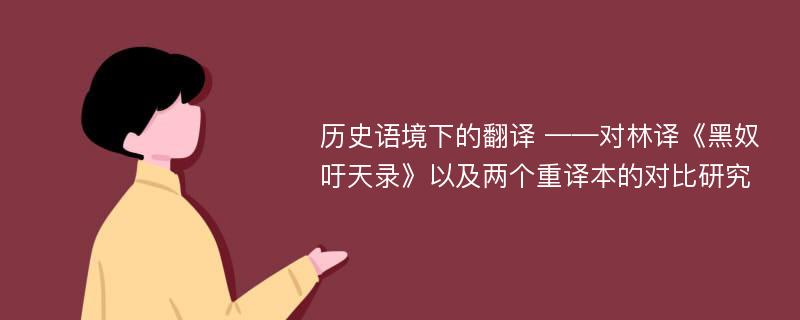
论文摘要
从文化的角度来说,翻译不仅仅是指从原文到译文的语言文字转换,同时,翻译还是不同文化间的一种交流、斗争与妥协。在实际的翻译过程中,特别是文学翻译过程中,尽管译者是进行实际语言转换的人,但他们并不是在完全自由地工作,有一系列的因素影响着译者的翻译抉择,而这些因素大部分来自译语文化社会。翻译作品以及他人对它的评论给我们研究翻译在文化环境中所受的影响和制约提供了材料和证据,通过研究这些材料和证据,我们就可以看出译者是怎么样在这种文化交流中做出选择的,一方面,他要面对已经形成的原语作品给他的限制,另一方面,它还要考虑他的翻译作品在译语中的生存问题,其中之一就是读者的接受,之二就是它是否与当时的社会文化情景相符,之三是译者的劳动能否给译语文化带来新意,促进译语文化的发展,产生译者期待的社会效应。译者对其中任何一点的违背或疏忽,都有可能使他的翻译作品得不到他所期待的认可。 现代翻译研究发现翻译不仅仅是一种语言间文字转换的技巧,因而从翻译的外部着手,如从文学与文化方面,用描述的方法来研究翻译,试图找出译者为何如此翻译的原因,以及制约译者翻译的各因素。吉登·图里从描述翻译研究的角度出发,把译作看作是译语文化中的一种实际存在,一种既定事实,并在译语文化中来研究翻译。他把对翻译作品在译语文化中功用性的期待,翻译作品的外在表现以及译者所采用的具体翻译策略联系在一起,认为其中一项的变化会导致其它项的变化。另外,他把“翻译标准”(translational norms)这一术语引用到翻译研究中来,并认为,翻译是受这些标准规范的活动,译者在翻译中受到这些标准的制约。同样,安德鲁·勒弗费尔也在译语文化中研究翻译,他研究译者在翻译
论文目录
AcknowledgementsAbstract中文摘要Chapter One Introduction1.1 Introduction of Uncle Tom's Cabin and Its Translation in Chinese1.2 Research Purpose and MethodologyChapter Two Literary Translation: Strategy and Theory2.1 Introduction: A Translation Story2.2 Traditional Translation Practice and Theory2.2.1 Translation and Translation Theory in the Ancient Time2.2.2 Linguistics-Oriented Translation Theory2.2.3 Cultural Turn in the Translation Studies2.3 Gideon Toury's Descriptive Translation Studies2.3.1 James S. Holmes' Classification of Translation Studies2.3.2 Toury's Descriptive Approach in Translation Studies2.3.3 Translational Norms2.3.4 Translation as a Norm-Governed Activity2.3.5 Translational Strategies Reflected in the Text2.4 The Theory of Translation Studies School2.4.1 Introduction2.4.2 Translation as a Kind of Rewriting2.4.3 Ideology2.4.4 Poetics2.4.5 Patronage2.4.6 Translation Manipulates2.5 Why Use Target-Oriented Approach in This Study2.6 Some Existing Studies on Lin Shu's TranslationChapter Three Translation as Facts of Target Culture3.1 Heinu Yutian Lu as the Translation of Uncle Tom's Cabin3.1.1 Translation in the Target Culture3.1.2 Lin Shu and Heinu Yutian Lu (《黑奴吁天录》)3.1.3 The Collaborator Wei Yi3.2 Tangmu Dabo de Xiaowu(《汤姆大伯的小屋》)3.3 Wang Jiaxiang and Her Translation: Tangmu Shushu de Xiaowu3.4 Historical Contexts Concerned3.4.1 Chinese Literary Traditions3.4.2 Literary Conditions in the Late Qing Period3.4.3 The Audience of the Translation Texts in Late Qing Period3.4.4 Literary Situations in the New EraChapter Four Comparative Studies of the Three Translations4.1 Retranslation and Difference4.2 Difference in General4.2.1 Deletion4.2.2 Adaptation4.2.3 Insertion4.3 Factors That Initiate Lin Shu's Manipulation4.3.1 Clearly-Presented Love and Hatred to the Characters in the Novel4.3.2 Repression of the Manifestation of Christianity in the Novel4.3.3 Deep Concerns to the Fate of the Chinese Nation Reflected in the Translation4.3.4 Compliance with the Chinese Feudalist Ideology or Culture4.3.5 Employment of Clichés Found in Old Chinese WritingsChapter Five ConclusionBIBLIOGRAPHY原创性声明关于学位论文使用授权的声明中文详细摘要
相关论文文献
标签:翻译研究论文; 历史语境论文; 黑奴吁天录论文; 林译论文; 制约论文; 翻译策略论文;
历史语境下的翻译 ——对林译《黑奴吁天录》以及两个重译本的对比研究
下载Doc文档
